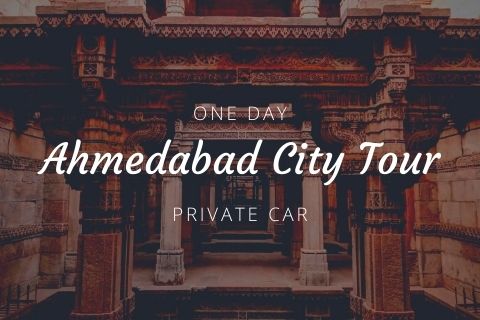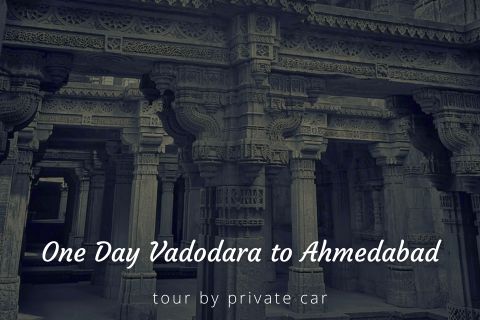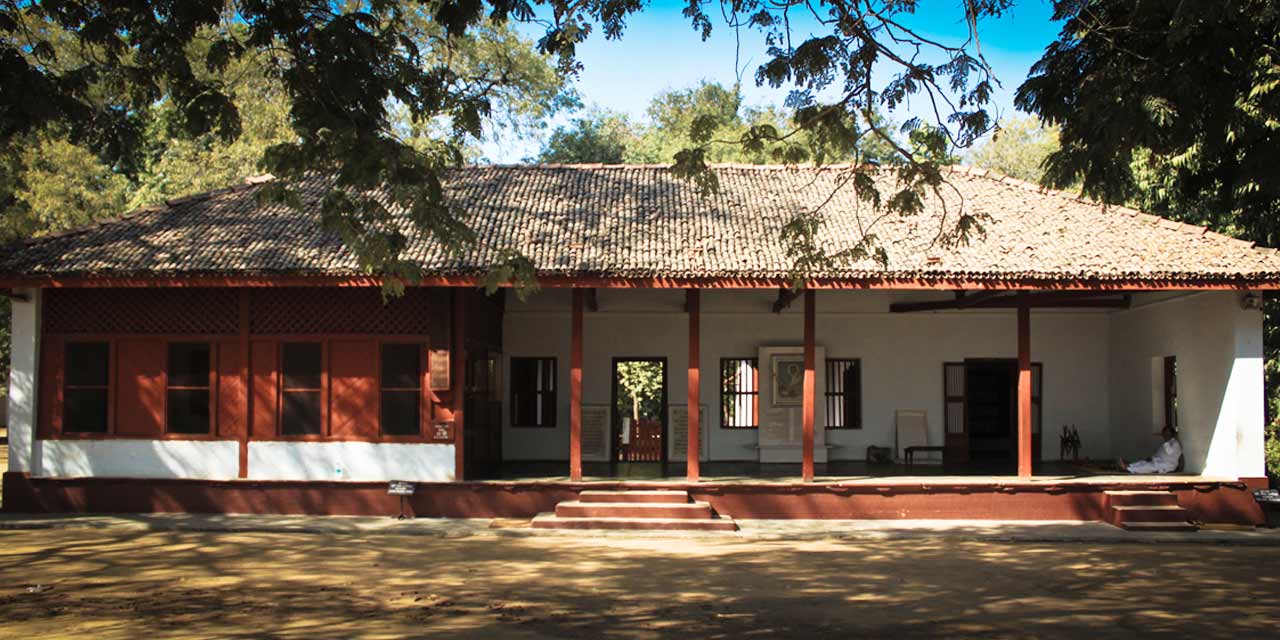Sabarmati Ashram Ahmedabad Entry Fee
- No entry fee
Sabarmati Ashram Ahmedabad Phone
079 2755 7277
Rating:  | 4/5 stars
| 4/5 stars
Based on total 64 reviews
Sabarmati Ashram Ahmedabad Address: Gandhi Smarak Sangrahalaya, Hridaya Kunj, Old Wadaj, Ahmedabad, Gujarat, 380027, India
Ahmedabad is a tantalizing city which proffers several historical treasures inspiring visitors with its beguiling stories. Christened as Amdavad it had been the nerve centre of India’s freedom struggle as significant freedom movements were started here. A major landmark of the city is the Sabarmati Ashram where Bapuji lived with his wife Kasturba Gandhi. More popular as Harijan Ashram and Satyagraha Ashram, this non-profit organization is situated on the banks of Sabarmati River four miles away from the town hall.
Travel back in time with the visit to the serene Sabarmati Ashram that stands as a testimony to the strenuous efforts of the father of the nation, Mahatma Gandhi in attaining freedom from the Britishers. Spanning over an area of 36 acres, the ashram accommodates different wings related to Gandhi's life including Hriday Kunj, Vinobha Kutir, Upasana Mandir and Gandhi Sangrahalaya.
A serene and inspiring ashram draws around seven lakh visitors annually. Tourists visit the ashram to follow the footsteps of Gandhiji. The ashram is involved in several activities that help to spread Gandhiji’s message and teachings. Renowned as Gandhi Smarak Sangrahalaya, the Ashram has been taking several initiatives to collect and preserve all the artefacts related to Gandhiji.
History of Sabarmati Ashram
Mahatma Gandhi who was instrumental in attaining the Independence for the country had a close association with Gujarat. Ahmedabad was known as the politico-cultural city of Mahatma Gandhi and Sardar Patel. It is the place where Mahatma Gandhi lived for twelve years along with his wife Kasturba Gandhi.
The ashram holds its significance from the fact that it was from here that Gandhiji led the Dandi March on 12 March 1930 which is known as Salt Satyagraha. Owing to its significance the Ashram is now considered as a national monument. Gandhiji along with his followers started the Dandi March from Sabarmati Ashram to Dandi that is located 241 miles away from Sabarmati.
Gandhiji started living in Kocharb in Ahmedabad after his return from South Africa on 25th May 1915. He wanted to engage himself in several activities including animal husbandry, cow breeding and farming as such he had then moved to an open area on the banks of river Sabarmati.
Legends state that the famed saint Dadhichi Rishi had once lived in this place. An ardent devotee of Lord Shiva, Dadhichi or Dadhyancha is said to have sacrificed his life so that the greatest weapon called Param Vir Chakra or Vajra was made out of his bones.
From 1917 till 1930, Gandhiji stayed in the Ashram that has been named after the famed river Sabarmati. Salt Satyagraha or the Dandi March is one of the most important national movements undertaken by our freedom fighters seeking Independence from British rule.
Image Gallery of Sabarmati Ashram Ahmedabad
Ashram Building
Sabarmati Ashram has been divided into separate sections namely Magan Niwas, Hriday Kunj, Gandhi Memorial Museum, Vinobha Mira Kutir, Udyog Mandir, Somnath Chhatralaya and Upasana Mandir.
Magan Niwas
Named after the close associate and nephew of Mahatma Gandhi, Maganlal Khushalchand Gandhi recommended the word Satyagraha to denote Gandhi’s non violent ways of freedom struggle as in the word satyagraha where sat means truth and agraha means firmness.
Hriday Kunj
Stepping into the Hriday Kunj will introduce the visitors to the life of Gandhiji and his wife Kasturba Gandhi. Hriday Kunj has six rooms including that of Gandhiji’s room, Kasturba Gandhi’s room, a guest room, a kitchen, store room, a secretariat and a venue where Gandhiji used to meet many national and international dignitaries. Hriday Kunj features replicas of his personal artefacts.
One can find things like his khadi kurta, yarn spun by Gandhiji himself and his writing desk. More renowned as Bapuji, Gandhiji used to meet important people in Hriday Kunj. He left the ashram on the day of dandi March and took a vow that he will return to the ashram only after acquiring Independence.
Gandhi Memorial Museum
An impressive museum throws light on the life and teachings of Mahatma Gandhi. It showcases eight life size paintings and photos narrating the historic events in Gandhi's life. Designed by Charles Correa, the museum was inaugurated by Jawaharlal Nehru on 10th May.
The informative museum has three galleries including Gandhi in Ahmedabad Gallery, Painting Gallery and My Life is My Message Gallery. Travellers gain an insight into the life and accomplishments of Mahatma Gandhi.
My Life is my message gallery has seven sections with two hundred and fifty photographs that cover his entire life from his birth in Porbandar in 1869, the time spent by him in England, the pivotal role he played in South African Indian Freedom struggle and the efforts he had taken to attain Indian Independence and his assassination in Delhi in 1948.
Gandhi in Ahmedabad Gallery holds around 50 hand drawn panels that narrate the historic events of Gandhi’s life which includes setting up of Kochrab Ashram, Mill Workers and Owners dispute, the Champaran Movement, establishment of Gujarat Vidyapith and Swadeshi Movement.
Painting Gallery showcases around eight wonderful paintings made by acclaimed artists and merchants named Chandulal Shah and Hiralal Khatri. Paintings portraying Gandhiji as weaving, marching, spinning cloth and meditating were made in 1960 and donated to the museum for the public viewing. A noteworthy painting is the portrait of Gandhiji created by Shri Rajkishore Kapoor.
Vinoba Mira Kutir
One of the key highlights of the Sabarmati Ashram is the Vinobha Mira Kutir which has been named after Acharya Vinoba, Gandhi's disciple as well as the daughter of British Admiral Miraben.
Udyog Mandir
Established in 1918 Udyog Mandir played a vital role in supporting Swaraj through Khadi movement. Khadi refers to a cloth that is hand-spun or hand-woven. He promoted the Khadi movement which worked as a symbol of self-reliance and self-governance.
Somnath Chhatralaya
Step into Somnath Chhatralaya, a place where the students of the Ashram and the participants of the Swadeshi and Constructive Work Training Programmes lived. The building had around hundred rooms where the guests stayed following ashram rules.
Upasana Mandir
Set in between Hriday Kunj and Magan Kutir, the Upasana Mandir is an open prayer area where Gandhiji held prayer services for all. Gandhiji selflessly devoted his life to the freedom struggle and preached Bhagavad Gita at the Mandir. He is said to hold prayer sessions both morning and evening.
Nandini
Nandini is the guest house built next to Hriday Kunj where important people used to stay. Significant freedom fighters who stayed in the place include Rabindranath Tagore, Pandit Jawaharlal Nehru, Maulana Abdul Kalam Azad, Babu Rajendra Prasad, Reginald Prasad, Henry Polak and deenbandhu C.F. Andrews.
Archives and Library
An intriguing library features several letters either written by or written to the father of nation including both original and photocopies. It holds around 1371 manuscripts, an amazing collection of photographs and negatives of Mahatma Gandhi and his associates.
It houses an impressive collection of two hundred and ten films illustrating Gandhi’s life in Hindi, Gujarati and English language. Imposing library represents a collection of around 50000 books including books related to Gandhi’s personal secretary Mahadev Desai.
This meticulously maintained museum holds a hundred and six video cassettes and six hundred and twelve audio cassettes library that gives an opportunity to learn about the person who strived day and night for an independent India. People can relax and sit in the reading room which has around eighty periodicals in Gujarati, Hindi and English.
Ashram Trust runs several institutions for the welfare of the people and the community at large. It manages the Vinay Mandir for supporting secondary and higher education, hostel for Harijan girls and Mahila Adhyapan Mandir for Primary Teachers Training. Gujarat Khadi Gramodyog Mandal works for the upliftment of village industries promoting the production and sale of Khadi, handmade paper, soap, oil, Ambar Chakra, looms and accessories.
Khadi Gramodyog Prayog Samiti is indulged in the research and training in spinning, weaving, solar energy and biogas. Gujarat Harijan Sevak Sangh works for eradication of untouchability. Environmental Sanitation Institute is operated for conducting research in rural health and sanitation. For the comfortable stay and comfort of the guests the trust manages an Ashram Guest House located next to Hriday Kunj.
Archive houses around 34066 letters by Gandhiji, 8781 pages of manuscripts of Gandhi’s articles that appeared in Harijan, Harijanbandhu and Harijansevak, and negatives of 6367 photographs of Gandhi and his associates. There are around 30000 books, 155 felicitation letters received by Gandhiji and a collection of coins and postal stamps.
Entry Fees and Timings of Sabarmati Ashram
Ashram is open from 10 am in the morning till 6.00 pm in the evening on all days. There is no charge for entering the ashram. A larger group of people or student groups can visit the ashram informing the ashram beforehand for availing a guided tour.
In order to maintain the tranquillity and dignity of the place visitors are prohibited from smoking, consuming alcohol or taking drugs. Visitors can park their vehicles within the premises of the ashram without any charge. People are requested to dress appropriately to maintain the dignity of the ashram. Video and cameras are permitted within the ashram.
How to Reach Sabarmati Ashram
Sabarmati Ashram is set on the banks of the river Sabarmati. Ahmedabad is well connected to other parts of the city through rail, road and air. Sardar Vallabhai Patel International airport has several domestic and international flights connecting Ahmedabad with other cities and countries of the world.
Kalupur Railway station is the main station that has several trains running from different parts of the city to Ahmedabad. Buses are operated by both government and private operators and can be boarded from Gita Mandir or Paldi. Local taxi, cab, buses or auto rickshaws can be boarded from railway station, bus stand or airport to reach Sabarmati Ashram. You can also hire a private taxi from top car rental companies in Ahmedabad for easy commutation.
FAQ’s and General Information about Sabarmati Ashram
Are you planning a vacation to Ahmedabad and looking for some holiday packages? Then book an Ahmedabad tour package with us; we will provide you with the best holidays to experience the top tourist attractions of Ahmedabad. At Ahmedabad Tourism, a division of Holidays DNA, we understand that every person has different tastes and preferences when it comes to traveling. So, we design customized tours that are tailored to meet everyone’s needs. If you want to know more, please fill out the Contact Us form.





